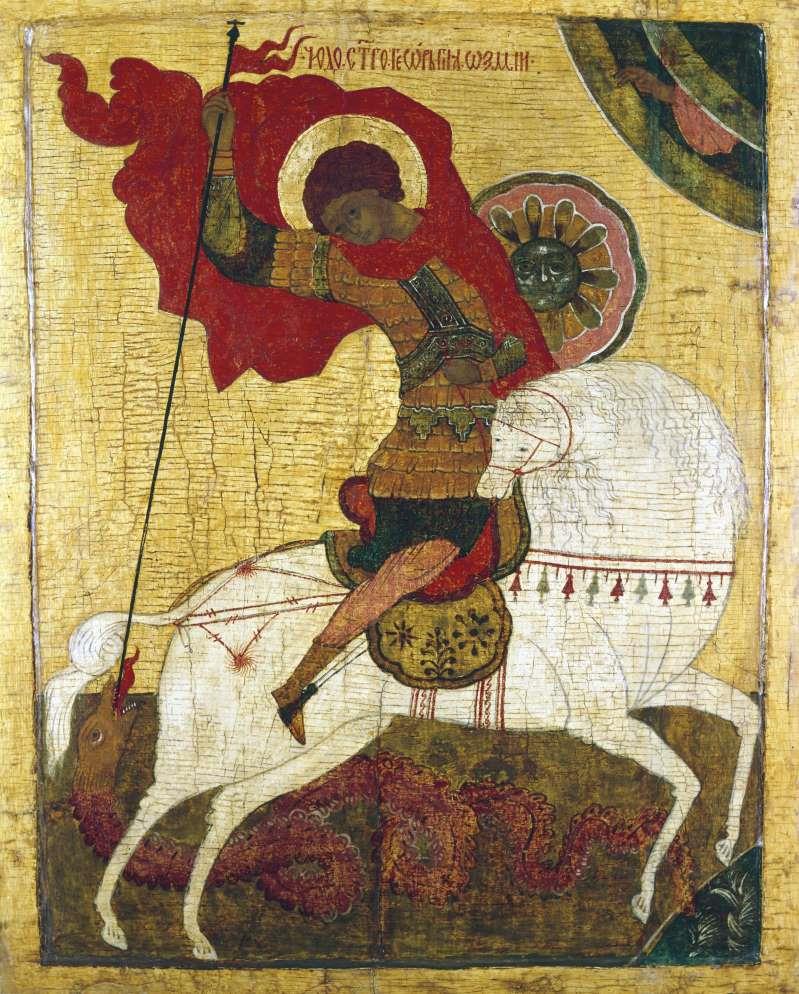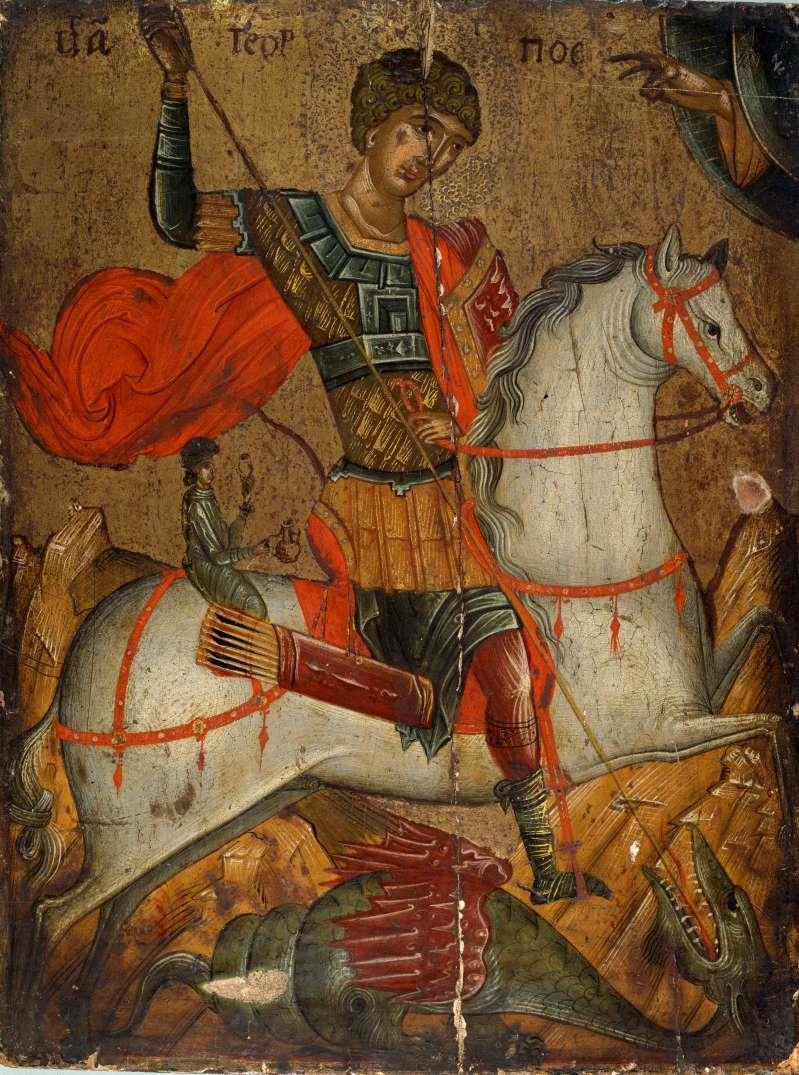









Designed by Nigel G Wilcox

Everything For The Metal Detectorist - Origins St Georges Day





Powered By Sispro1
British, St George's Cross - Flag & St. George
How the dragon-slayer became the patron saint of England
St George's Day is almost here, offering us all a chance to fly English flags, celebrate our country's heritage and honour the patron saint of England.
While St Patrick's Day, St David's Day and St Andrew's Day are all celebrated with patriotic community events, St George's Day has become less significant over time and has left the nation somewhat confused about how to recognise the day.
But, who was the legendary figure and why is he the nation's patron saint? From the history behind the dragon-slayer, to how you can celebrate the day this year, here is everything you need to know about St George's Day.
St George's Day is almost here, offering us all a chance to fly English flags, celebrate our country's heritage and honour the patron saint of England.
While St Patrick's Day, St David's Day and St Andrew's Day are all celebrated with patriotic community events, St George's Day has become less significant over time and has left the nation somewhat confused about how to recognise the day.
But, who was the legendary figure and why is he the nation's patron saint? From the history behind the dragon-slayer, to how you can celebrate the day this year, here is everything you need to know about St George's Day.

Flag of England

England
Irish Flag
Flag Menu
Union Flag
Copyright All Rights Reserved by Nigel G Wilcox E-Mail: ngwilcox100@gmail.com
The Paragon Of Metal Detecting
& Archaeology
& Archaeology
5. Menu
Pages

Icon - Novgorod School, 15th century. St George killing the dragon. Tritiakov Gallery, Moscow. (Photo by: Photo 12/UIG via Getty Images)
St George's Day, the patron saint day of England, falls each year on April 23. Recognised annually on the anniversary of St George's death, the day was previously a national holiday and was once celebrated as widely as Christmas.
Since the 18th century, after England and Scotland united in 1707, celebrations have diminished, although some parades and public activities continue to be held every year.
Since the 18th century, after England and Scotland united in 1707, celebrations have diminished, although some parades and public activities continue to be held every year.
Who was St George?

(Eingeschränkte Rechte für bestimmte redaktionelle Kunden in Deutschland. Limited rights for specific editorial clients in Germany.) Middle Ages Saint George *around 275-303+ St. George fighting with the dragon - depiction on a leather jewelry box - 14th century (Photo by Archiv Gerstenberg/ullstein bild via Getty Images)
Despite being adopted as the patron saint of England, St George wasn't actually English, and most likely never stepped foot in the country. Born around AD 280, in what is now known as Cappadocia, Turkey, St George was a Christian martyr and became a soldier in the Roman army, later progressing to the role of a personal guard for the Emperor Diocletian.
The emperor was one of the leaders of the Great Persecution of Christians, where
The emperor was one of the leaders of the Great Persecution of Christians, where
churches were destroyed, scriptures were burnt and followers of the religion were prohibited from joining the army and assembling for worship.
But his personal guard, St George, protested against the persecution and remained dedicated to his Christian faith, consequently facing imprisonment and torture, before being beheaded in Palestine on April 23, AD 303.
His head was taken to, and stored, in the church dedicated to him in Rome, and the rest of his body was buried in Lod, Israel.
His strength, courage and loyalty to his faith soon spread around Europe, and it even inspired his wife, who apparently became Christian, and also faced execution.
But his personal guard, St George, protested against the persecution and remained dedicated to his Christian faith, consequently facing imprisonment and torture, before being beheaded in Palestine on April 23, AD 303.
His head was taken to, and stored, in the church dedicated to him in Rome, and the rest of his body was buried in Lod, Israel.
His strength, courage and loyalty to his faith soon spread around Europe, and it even inspired his wife, who apparently became Christian, and also faced execution.

© Ashmolean Museum, University of Oxford Icon of St George slaying the Dragon, 15th-16th century. Dimensions: height x width x depth: 42 x 31.8 cm (Photo by Ashmolean Museum/Heritage Images/Getty Images)
Fighting a dragon and saving a princess
As well as his army background and dedication to his faith, St George is most famous for fighting a dragon, which during the Middle Ages commonly symbolised the Devil.
Legend suggests St George fought a dragon and saved a princess in the town of Silene - although this is most likely a myth.
According to legend, the only well in Silene was guarded by a dragon and each day, residents had to make human sacrifices in order to access the water.
A princess was the next person to be sacrificed and on the day she was due to be killed, St George bravely fought the dragon to save her.
St George successfully killed the dragon and the people of Silene were finally granted free access to the well. As a recognition of their gratitude to St George, they turned to Christianity.
Legend suggests St George fought a dragon and saved a princess in the town of Silene - although this is most likely a myth.
According to legend, the only well in Silene was guarded by a dragon and each day, residents had to make human sacrifices in order to access the water.
A princess was the next person to be sacrificed and on the day she was due to be killed, St George bravely fought the dragon to save her.
St George successfully killed the dragon and the people of Silene were finally granted free access to the well. As a recognition of their gratitude to St George, they turned to Christianity.
Why do we celebrate St George's Day?
Even though St George never stepped foot on English soil, he officially became the Patron Saint of England around 1348, after King Edward III established the Order of the Garter in his name.
From the 14th Century, St George was regarded as a special protector of the English and in 1415, King Henry V raised the profile of the saint further at the Battle of Agincourt. Following England's victory, Archbishop Chichele raised the celebration of St George to a Double Feast.
Shakespeare made sure St George was never forgotten, concluding the Henry V, Act III, speech with ‘Cry God for Harry, England and St George'.
St George's Cross, which is England's flag and now forms part of the Union Jack, is the symbol displayed on April 23. Dating back to the year of 1188, crosses were first used by King Henry II of England and King Philip II of France for their crusade symbols.
Despite England adopting a white cross at first, they later switched to a red cross, which was used as part of the uniforms of English soldiers in several battles. Edward I eventually made this symbol a national emblem during his reign.
Today, St George's cross is used frequently at football, rugby and cricket games, with fans wearing scarves, painting their faces and flying flags to show their support for England.
Unlike other patron saint days, St George's Day isn't a bank holiday, meaning transport, schools and businesses operate as normal every year.
However, Jeremy Corbyn is said to be in favour of making the patron saint day a national holiday under a Labour government and some people are in support of this idea, arguing a public holiday would help increase celebrations again. Others even claim that St Alban should become the Patron Saint of England instead.
While St George's Day celebrations have decreased over time, there are still some parades, music performances and community events held across the country to honour the patron saint.
A red rose has also been the national emblem of England since the War of the Roses, 1455-1485, and some people choose to wear this flower on St George's Day.
As well as being the Patron Saint of England, St George is the Patron Saint of Scouting and around April 23, Scouts often hold celebrations such as parades and faith services.
How to celebrate St George's Day in 2019
Fancy a pint? Throughout the country, pubs celebrate by decorating their venues with the St George s cross, offering people the chance to celebrate together with a few drinks.
The hymn of Jerusalem is traditionally sung on the day and Morris Dancers often perform around the country.
There are also St George s Day festivals around London and some people choose to head to the parks to celebrate with friends. The main event taking place in the capital is the Mayor of London s Feast of St George on Saturday, April, 20, from midday, in Trafalgar Square, with live stage performances and a delicious English food market.
Even though celebrations may be minimal in England, St George is the patron saint of other countries too and each nation has their own way of honouring the day.
In Russia, St George s Day is honoured on May, 6, because the Russian Orthodox Church use the Julian Calendar. In recognition of the patron saint, the black and orange Ribbon of St George is used by civilians as a patriotic symbol.
Albania also celebrate and represent their joy by lighting fires and playing around it while similarly in Croatia, fires are lit on St George s Day to mark the first day of Spring.
In Catalonia, Spain, a public holiday is held for St George (Sant Jordi), with roses and books exchanged by lovers and in Bulgaria, it is a tradition to roast a whole lamb because St George is the patron saint of shepherds.
In Ethiopia, St George is known as the Patron Saint of Saints and they celebrate on May, 1, with a public holiday.
In Georgia, St George s Day, is celebrated on November, 23, and on this day, they recognise the torture St George endured for refusing to make sacrifices to the Roman gods.
Also on St George's Day...
April 23 is believed to be the date of birth, and death, of English playwright, Shakespeare, with some celebrations of literature taking place around this day.
April 23, 1968, also marks the date when the first decimal coins, five and 10 pence pieces, were introduced alongside the shilling and florin.
Celebrations take place across the country of England to celebrate St. George, the patron saint of England. The emblem of St George, a red cross on a white background is the flag of England.
From the 14th Century, St George was regarded as a special protector of the English and in 1415, King Henry V raised the profile of the saint further at the Battle of Agincourt. Following England's victory, Archbishop Chichele raised the celebration of St George to a Double Feast.
Shakespeare made sure St George was never forgotten, concluding the Henry V, Act III, speech with ‘Cry God for Harry, England and St George'.
St George's Cross, which is England's flag and now forms part of the Union Jack, is the symbol displayed on April 23. Dating back to the year of 1188, crosses were first used by King Henry II of England and King Philip II of France for their crusade symbols.
Despite England adopting a white cross at first, they later switched to a red cross, which was used as part of the uniforms of English soldiers in several battles. Edward I eventually made this symbol a national emblem during his reign.
Today, St George's cross is used frequently at football, rugby and cricket games, with fans wearing scarves, painting their faces and flying flags to show their support for England.
Unlike other patron saint days, St George's Day isn't a bank holiday, meaning transport, schools and businesses operate as normal every year.
However, Jeremy Corbyn is said to be in favour of making the patron saint day a national holiday under a Labour government and some people are in support of this idea, arguing a public holiday would help increase celebrations again. Others even claim that St Alban should become the Patron Saint of England instead.
While St George's Day celebrations have decreased over time, there are still some parades, music performances and community events held across the country to honour the patron saint.
A red rose has also been the national emblem of England since the War of the Roses, 1455-1485, and some people choose to wear this flower on St George's Day.
As well as being the Patron Saint of England, St George is the Patron Saint of Scouting and around April 23, Scouts often hold celebrations such as parades and faith services.
How to celebrate St George's Day in 2019
Fancy a pint? Throughout the country, pubs celebrate by decorating their venues with the St George s cross, offering people the chance to celebrate together with a few drinks.
The hymn of Jerusalem is traditionally sung on the day and Morris Dancers often perform around the country.
There are also St George s Day festivals around London and some people choose to head to the parks to celebrate with friends. The main event taking place in the capital is the Mayor of London s Feast of St George on Saturday, April, 20, from midday, in Trafalgar Square, with live stage performances and a delicious English food market.
Even though celebrations may be minimal in England, St George is the patron saint of other countries too and each nation has their own way of honouring the day.
In Russia, St George s Day is honoured on May, 6, because the Russian Orthodox Church use the Julian Calendar. In recognition of the patron saint, the black and orange Ribbon of St George is used by civilians as a patriotic symbol.
Albania also celebrate and represent their joy by lighting fires and playing around it while similarly in Croatia, fires are lit on St George s Day to mark the first day of Spring.
In Catalonia, Spain, a public holiday is held for St George (Sant Jordi), with roses and books exchanged by lovers and in Bulgaria, it is a tradition to roast a whole lamb because St George is the patron saint of shepherds.
In Ethiopia, St George is known as the Patron Saint of Saints and they celebrate on May, 1, with a public holiday.
In Georgia, St George s Day, is celebrated on November, 23, and on this day, they recognise the torture St George endured for refusing to make sacrifices to the Roman gods.
Also on St George's Day...
April 23 is believed to be the date of birth, and death, of English playwright, Shakespeare, with some celebrations of literature taking place around this day.
April 23, 1968, also marks the date when the first decimal coins, five and 10 pence pieces, were introduced alongside the shilling and florin.
Celebrations take place across the country of England to celebrate St. George, the patron saint of England. The emblem of St George, a red cross on a white background is the flag of England.
Courtesy: The Telegraph Hannah Daly 22.04.19
Member NCMD
Update:2020 - When did Bank Holidays begin?
The bank holiday tradition began in the Nineteenth Century when there was new legislation passed called The Bank Holidays Act 1871. Scotland celebrates St Andrews' Day (30th November) and Ireland has a day off on St Patrick's Day (17th March), but Wales does NOT have a bank holiday for their patron saint St David on 1st March. England also does NOT have a holiday for their patron saint, Saint George on his day, which is the 23rd of April.
Recently, the creation of a new bank holiday to celebrate Brexit has cleared its first parliamentary hurdle.
Pro-Brexit Tory backbencher Peter Bone has led calls for a United Kingdom Day in June to celebrate Brexit, the Union and the Queen.
His proposed bank holiday would fall on the Friday nearest to June 23 - the date of the EU referendum in 2016 - and could also mark the Queen s birthday and coronation anniversary, both of which fall in June. The Bill was introduced without a vote, with a second reading scheduled for June 26, 2020 which Mr Bone said would happen to be United Kingdom Day if it existed.
It has little chance of making further progress in its current form without Government backing. The Wellingborough MP said an extra day off would boost workers productivity as there is a long gap between the late May and the late August bank holidays in England, Scotland and Wales, this additional day could rectify this shortfall.
In addition to the political climate, a world event that took the world by storm and caused fatal devastation
The bank holiday tradition began in the Nineteenth Century when there was new legislation passed called The Bank Holidays Act 1871. Scotland celebrates St Andrews' Day (30th November) and Ireland has a day off on St Patrick's Day (17th March), but Wales does NOT have a bank holiday for their patron saint St David on 1st March. England also does NOT have a holiday for their patron saint, Saint George on his day, which is the 23rd of April.
Recently, the creation of a new bank holiday to celebrate Brexit has cleared its first parliamentary hurdle.
Pro-Brexit Tory backbencher Peter Bone has led calls for a United Kingdom Day in June to celebrate Brexit, the Union and the Queen.
His proposed bank holiday would fall on the Friday nearest to June 23 - the date of the EU referendum in 2016 - and could also mark the Queen s birthday and coronation anniversary, both of which fall in June. The Bill was introduced without a vote, with a second reading scheduled for June 26, 2020 which Mr Bone said would happen to be United Kingdom Day if it existed.
It has little chance of making further progress in its current form without Government backing. The Wellingborough MP said an extra day off would boost workers productivity as there is a long gap between the late May and the late August bank holidays in England, Scotland and Wales, this additional day could rectify this shortfall.
In addition to the political climate, a world event that took the world by storm and caused fatal devastation






















